Unlocking the potential of public data is a game changer for B2B marketers. By tapping into this treasure trove, you can uncover insights that drive targeted strategies and foster meaningful connections. Embrace the data revolution and transform your approach!
How B2B Marketers Can Unearth Gold from Public Data
In an age where information is the new currency, public data stands as a vast, untapped reservoir waiting to be transformed into precious insights. For B2B marketers, the ability to harness this wealth of information can be the difference between merely keeping pace with the competition and leading the charge in innovation and strategy. Imagine a world where your marketing decisions are not based on gut feelings, but on solid, data-driven evidence that illuminates your path to success. Public data offers a treasure trove of opportunities – from understanding market trends and identifying customer needs to fine-tuning your messaging and targeting efforts. In this article, we will explore how savvy B2B marketers can unearth gold from public data, turning raw numbers into actionable strategies that drive growth and establish authority in their industries. Join us on this journey to discover the powerful potential that lies within the data all around us, and unlock the secrets to creating impactful, informed marketing campaigns that resonate with your audience.
Unlocking the Treasure Trove of Public Data for B2B Success
In an age where data drives decisions, B2B marketers are sitting on a gold mine—public data. This treasure trove, often overlooked, can significantly enhance strategic planning, customer insights, and campaign effectiveness. By leveraging public data, businesses can not only refine their target audience but also uncover hidden opportunities that may have otherwise gone unnoticed.
Public data comes from various sources, including:
- Government databases: Access to economic indicators, business registrations, and industry reports.
- Social media platforms: Insights on consumer behavior, preferences, and trends.
- Industry reports: Analysis on market conditions, competitive landscape, and emerging technologies.
Utilizing these resources can help marketers in numerous ways. For instance, analyzing data from social media can offer a glimpse into customer sentiment, while government statistics can inform product development or market entry strategies. By understanding this ecosystem, B2B marketers can:
- Identify target markets: Pinpoint ideal customers based on demographic and behavioral data.
- Optimize pricing strategies: Use market data to set competitive pricing that reflects demand.
- Enhance content marketing: Create relevant content that resonates with the audience by understanding their needs and interests.
Moreover, integrating public data into your marketing strategy can lead to improved ROI and streamlined operations. By harnessing this information, teams can make data-driven decisions that align with business objectives. Consider the following examples of how public data can be transformed into actionable insights:
| Data Source | Use Case | Outcome |
|---|---|---|
| Local Government Reports | Identifying new business opportunities in growing sectors | Increased market share in targeted regions |
| Social Media Analytics | Understanding customer engagement trends | Enhanced customer loyalty and retention |
| Industry Surveys | Benchmarking against competitors | Improved product positioning and messaging |
The key to unlocking the potential of public data lies in the ability to analyze and interpret it effectively. Investing in the right tools and technologies can turn raw data into valuable insights. Whether through advanced analytics platforms or collaborative data-sharing initiatives, the right approach can lead to groundbreaking discoveries that propel B2B success.
As we move forward, the importance of public data in shaping marketing strategies cannot be overstated. By embracing this resource, B2B marketers can not only stay ahead of the competition but also provide greater value to their clients. The exploration of public data is just beginning—seize the opportunity today!

Understanding the Landscape of Public Data in B2B Marketing
In the dynamic realm of B2B marketing, public data serves as a treasure trove waiting to be discovered. This readily available information can provide insights that inform strategic decisions and elevate marketing effectiveness. By leveraging public data, marketers can not only enhance their understanding of target audiences but also craft personalized approaches that resonate powerfully.
Start by exploring various sources of public data, which can include:
- Government databases: Many countries provide access to data on economic indicators, industry trends, and demographic statistics.
- Social media platforms: User-generated content can yield insights into customer sentiment and emerging trends.
- Industry reports: Organizations often publish research that reveals competitive landscapes and market dynamics.
Utilizing public data effectively requires a systematic approach. First, define your objectives clearly. Are you looking to expand your market reach, understand customer behavior, or track competitors? Once you have your goals in mind, focus on gathering and analyzing relevant data sets. Consider creating a structured framework to categorize the data, which will facilitate easier access and interpretation.
When analyzing public data, visual representation can enhance comprehension and impact. For instance, transforming raw data into infographics or charts allows stakeholders to grasp complex information quickly. Here’s a simple table illustrating potential applications of public data in B2B marketing:
| Type of Data | Application | Expected Outcome |
|---|---|---|
| Market Reports | Identifying market gaps | Strategic product development |
| Customer Reviews | Enhancing service offerings | Increased customer satisfaction |
| Industry Trends | Staying ahead of the competition | Improved market positioning |
Moreover, public data can fuel your content strategy. By identifying trending topics and pain points within your target audience, you can create tailored content that addresses their needs. Engage with your audience on platforms where they are most active, using the insights gleaned from public data to drive discussions and foster community engagement.
remember that the key to leveraging public data effectively lies in continuous monitoring and adaptation. As market conditions evolve, so should your strategies. Regularly revisit your data sources and analytics to stay aligned with shifting trends and audience preferences. By cultivating a data-driven culture, your B2B marketing efforts will not only survive but thrive in an increasingly competitive landscape.
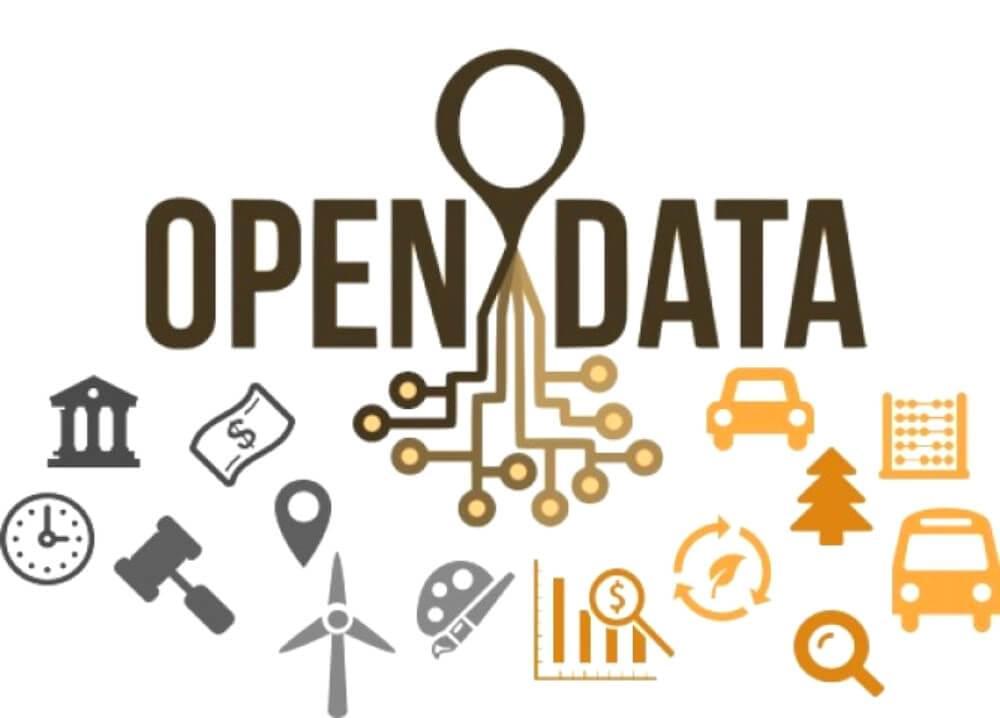
Identifying Key Public Data Sources That Drive Insights
In the realm of B2B marketing, leveraging public data sources can be a game-changer. These sources are not only abundant but also rich with insights that drive strategic decision-making. By tapping into these resources, marketers can unveil critical trends, uncover customer preferences, and refine their targeting strategies.
Here are some key public data sources that can provide invaluable insights:
- Government Databases: Many government agencies offer open data portals with information on economic indicators, demographic statistics, and industry-specific data. These datasets can help marketers understand market dynamics and identify potential growth areas.
- Social Media Platforms: Users share their thoughts and experiences openly on social media, making it a goldmine for sentiment analysis and brand perception. Tools that analyze social media trends can provide insights into customer pain points and preferences.
- Industry Reports: Numerous organizations publish free reports that detail market trends, competitive landscapes, and consumer behaviors. Keeping a pulse on these reports can guide content creation and marketing strategies.
- Academic Research: Universities and research institutions often release valuable studies that can shed light on industry trends and innovations. Partnering with these institutions or utilizing their findings can enhance credibility and lead to thought leadership opportunities.
- Publicly Available Financial Records: For B2B marketers, understanding the financial health of potential clients through public financial statements can inform sales pitches and tailor approaches to meet specific needs.
To effectively utilize these data sources, it’s imperative to approach them systematically. Here’s a simple framework to get started:
| Data Source | Type of Insights | How to Use |
|---|---|---|
| Government Databases | Market trends and economic indicators | Identify growth sectors |
| Social Media | Consumer sentiment and preferences | Craft targeted campaigns |
| Industry Reports | Competitive analysis | Inform product development |
| Academic Research | Innovative solutions and methodologies | Enhance credibility |
| Financial Records | Client financial health | Tailor sales strategies |
By systematically incorporating these public data sources into their marketing strategies, B2B marketers can transition from guesswork to informed decision-making. Each piece of data tells a story; it’s about connecting the dots to reveal actionable insights that can significantly elevate marketing efforts.
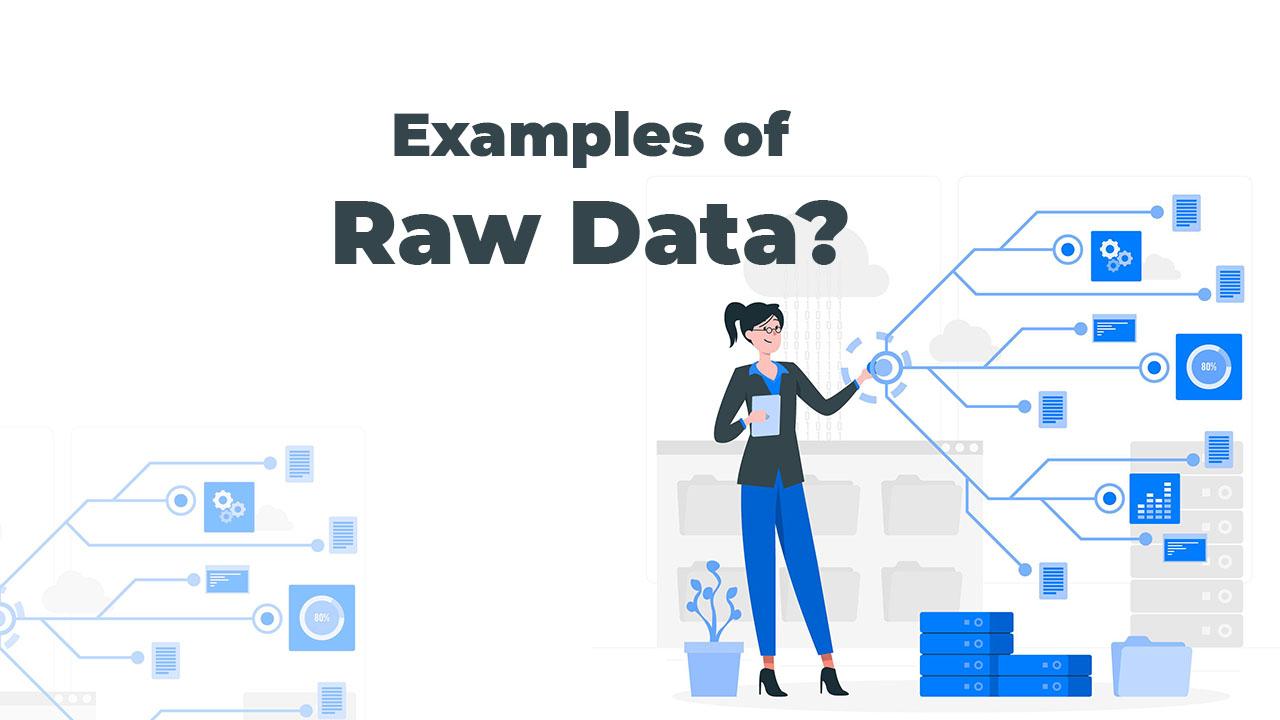
Transforming Raw Data into Actionable Marketing Strategies
In today’s data-driven landscape, B2B marketers stand at the forefront of an exciting opportunity: the ability to transform raw public data into actionable insights that drive marketing strategies. The key lies in understanding how to sift through vast amounts of information to uncover trends, behaviors, and opportunities that can be leveraged for effective campaigns.
To harness the power of public data, B2B marketers should focus on the following strategies:
- Identifying Relevant Sources: Public data is abundant, coming from sources such as government reports, industry analyses, social media platforms, and customer feedback. Choosing the right data sources is crucial for yielding valuable insights.
- Data Mining Techniques: Utilize advanced analytics tools and techniques to dig deep into the data. Techniques like clustering, regression analysis, and sentiment analysis can reveal patterns that traditional methods may overlook.
- Creating Buyer Personas: By analyzing data, marketers can create detailed buyer personas that reflect the motivations and needs of target audiences. This personalization ensures that marketing messages resonate more deeply with prospective clients.
Furthermore, combining qualitative insights with quantitative data can foster a more comprehensive understanding of market dynamics. Engaging with data through diverse lenses allows marketers to:
- Spot Emerging Trends: Stay ahead of the competition by identifying shifts in consumer behavior and industry trends before they fully materialize.
- Optimize Campaign Performance: Leverage data insights to refine targeting strategies, ensuring that marketing efforts are efficiently directed towards high-potential leads.
- Enhance Customer Engagement: Utilize insights to tailor content and communication strategies, fostering stronger relationships with clients and encouraging brand loyalty.
| Data Source | Insights Gained | Marketing Application |
|---|---|---|
| Government Reports | Market growth indicators | Long-term strategy planning |
| Social Media Analytics | Audience engagement trends | Content strategy development |
| Customer Feedback | Product improvement areas | Targeted marketing campaigns |
Ultimately, the transformation of raw public data into actionable marketing strategies is not just about numbers; it’s about telling a story that resonates with potential clients. By adopting a data-driven mindset and embracing innovative analytical approaches, B2B marketers can uncover hidden gems of information that lead to growth and success in an increasingly competitive market.
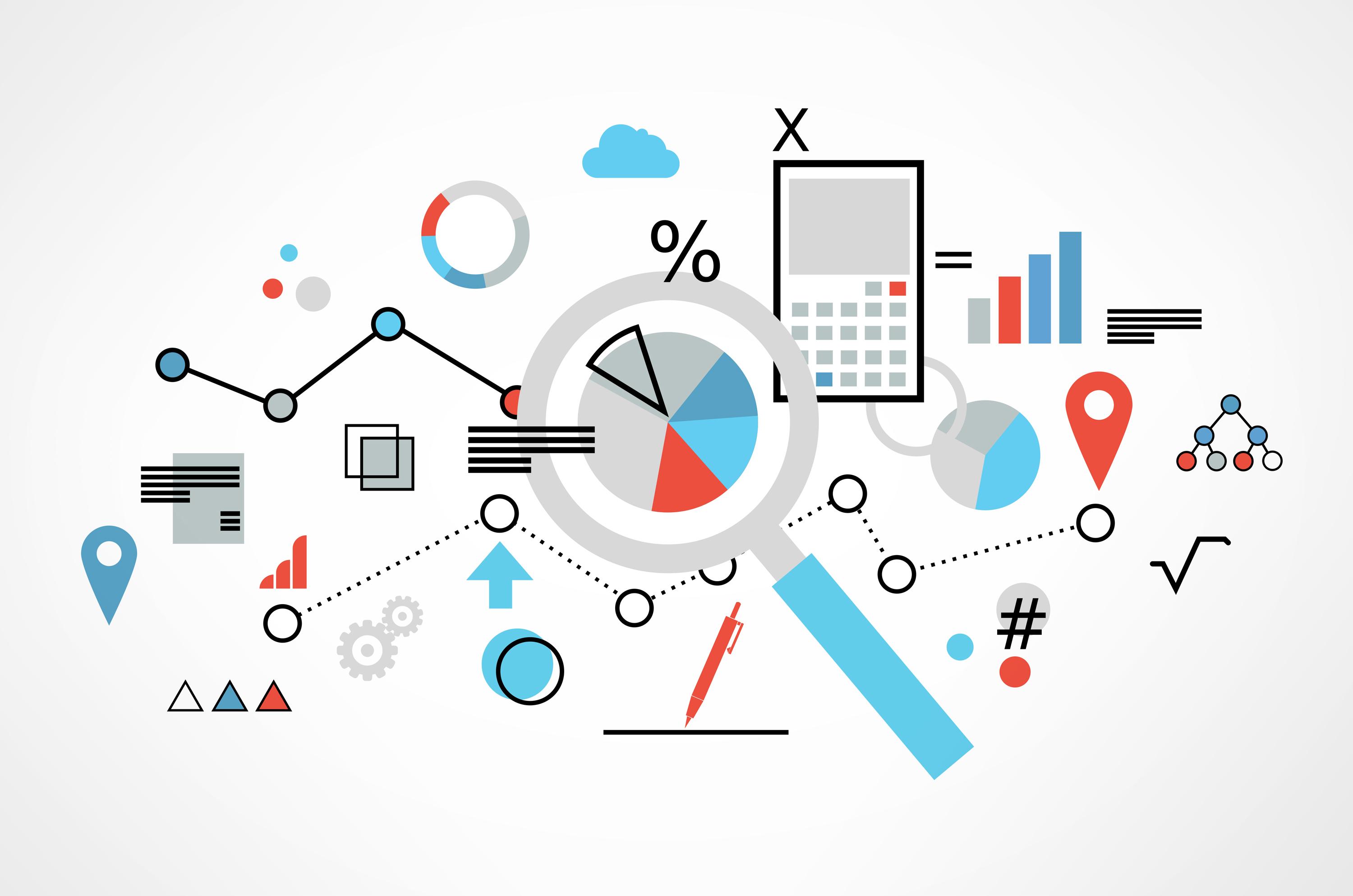
Harnessing Data Analytics to Reveal Hidden Patterns
In the vast sea of public data, hidden patterns lie waiting to be discovered. B2B marketers can delve into this treasure trove by leveraging advanced data analytics techniques. By analyzing data points, companies can unveil insights that not only enhance their marketing strategies but also drive substantial growth. Here are some key areas where analytics can reveal transformative patterns:
- Customer Segmentation: By analyzing demographic, geographic, and behavioral data, businesses can segment their audiences more effectively. This enables tailored marketing efforts that resonate with specific groups, driving higher engagement and conversion rates.
- Trend Analysis: Utilizing historical data can help marketers spot emerging trends within their industry. Understanding these trends allows companies to adapt quickly, positioning themselves as thought leaders.
- Predictive Analytics: By employing machine learning algorithms, businesses can forecast future customer behaviors and market shifts. This proactive approach empowers marketers to make informed decisions and allocate resources more effectively.
- Competitive Analysis: Analyzing public data on competitors can uncover their weaknesses and strengths. This insight not only helps in refining value propositions but also aids in crafting compelling marketing messages that stand out.
Moreover, data visualization tools can transform complex datasets into intuitive graphics, making it easier for teams to identify correlations and trends. For example, mapping geographic data can reveal where potential customers are concentrated, guiding targeted outreach efforts. The right visualization can turn mundane statistics into compelling stories that drive action.
Consider leveraging data to create a comprehensive table that outlines key metrics across different segments:
| Segment | Engagement Rate | Conversion Rate | Average Order Value |
|---|---|---|---|
| Technology | 12% | 4% | $1,200 |
| Healthcare | 15% | 5% | $1,500 |
| Finance | 10% | 3% | $1,000 |
This kind of analysis not only highlights the differences between segments but also reveals opportunities for growth. Understanding which segments yield the highest return enables marketers to focus their efforts where they matter most, maximizing their investments.
Ultimately, harnessing data analytics is about turning raw numbers into actionable insights. By adopting a data-driven mindset, B2B marketers can uncover golden opportunities hidden within public data, leading to strategies that resonate with clients and foster long-term relationships. The future is bright for those who dare to dig deeper.
Utilizing Social Media Data to Inform B2B Campaigns
In the ever-evolving landscape of B2B marketing, leveraging social media data has emerged as a crucial strategy for driving effective campaigns. With a wealth of information available at our fingertips, marketers can now tap into insights that were once hidden within vast datasets. This enables the creation of targeted, personalized campaigns that resonate deeply with potential clients.
Understanding Audience Behavior
Social media platforms are treasure troves of audience behavior, preferences, and pain points. By analyzing interactions, likes, shares, and comments, B2B marketers can gain a clearer understanding of what their target audiences value. This understanding can be harnessed to:
- Create content that addresses specific pain points.
- Identify trending topics within industry conversations.
- Adjust messaging to align with audience sentiment.
Engaging with Industry Influencers
Another powerful avenue is collaborating with industry influencers. Social media data can help identify key thought leaders whose opinions significantly impact your target audience. Engaging these influencers not only amplifies your reach but also builds credibility for your brand. Consider:
- Following and interacting with relevant influencers.
- Sharing their insights to showcase thought leadership.
- Collaborating on webinars or content pieces for joint visibility.
Segmenting Your Audience
Utilizing social media analytics allows for precise segmentation of your audience. By categorizing based on behavior, interests, and demographics, campaigns can be tailored for maximum impact. B2B marketers can:
- Craft personalized email marketing campaigns.
- Develop targeted ads that speak directly to different segments.
- Utilize retargeting strategies to re-engage those who have shown interest.
Measuring Campaign Effectiveness
social media data equips marketers with the metrics needed to evaluate the effectiveness of their campaigns. By tracking engagement rates, click-through rates, and conversion metrics, businesses can continuously refine their strategies for improved results. Employing tools that allow for:
- Real-time analysis of social media performance.
- Feedback loops for learning and adaptation.
- Comparative analysis against industry benchmarks.
| Data Source | Insights Gained |
|---|---|
| Twitter Analytics | Engagement trends and audience demographics |
| LinkedIn Insights | Industry-specific interests and connections |
| Facebook Audience Insights | Detailed consumer preferences and behaviors |
| Instagram Insights | Visual engagement patterns and content performance |
Leveraging Government and Industry Reports for Competitive Edge
In the world of B2B marketing, data is the new oil. Government and industry reports serve as invaluable sources of insights, revealing market trends, consumer behavior, and competitive landscapes. By tapping into this wealth of information, marketers can craft strategies that not only resonate with their target audience but also elevate their positioning within the industry.
To truly harness the potential of public data, consider the following advantages:
- Credibility: Government reports are often backed by rigorous research methodologies, lending a level of trustworthiness that can enhance your marketing narrative.
- Market Trends: These reports provide a snapshot of current and emerging trends, enabling marketers to stay ahead of the curve and anticipate shifts in consumer preferences.
- Competitive Analysis: Understanding industry benchmarks can help you identify gaps in your offering and strategize effectively against your competitors.
To maximize the impact of these reports, it’s crucial to adopt a systematic approach. Start by identifying key reports relevant to your sector. Government agencies, trade associations, and industry think tanks often publish comprehensive studies that are rich in data. Once you have gathered your resources, analyze them thoroughly to extract actionable insights.
For instance, consider creating a data dashboard that visualizes key metrics from these reports. This can help distill complex information into digestible formats, making it easier for your team to grasp essential takeaways. Use tools like Tableau or Google Data Studio to present your findings dynamically.
Moreover, it’s beneficial to compile your findings into a table for quick reference. Below is an example of how to summarize critical insights from various reports:
| Report Source | Key Insights | Actionable Strategy |
|---|---|---|
| Government Economic Report | GDP growth trends | Adjust pricing strategies based on economic forecasts |
| Industry Trade Association Study | Emerging technology adoption | Invest in new tools that align with market demands |
| Market Research Firm Analysis | Consumer buying patterns | Refine target personas based on behavioral data |
Ultimately, the key to gaining a competitive edge lies in your ability to interpret and implement insights gleaned from these reports. By consistently monitoring and analyzing relevant data, you can not only inform your marketing strategies but also drive innovation within your organization. Embrace this opportunity to transform public data into a powerful asset that propels your business forward.

Creating Targeted Buyer Personas from Public Insights
To effectively leverage public insights for creating targeted buyer personas, B2B marketers must first immerse themselves in various sources of information available in the public domain. This includes social media platforms, industry reports, blogs, and forums where your potential customers gather. By analyzing these data points, you can uncover key characteristics that define your ideal customers.
Consider the following tactics to extract meaningful insights:
- Social Listening: Monitor conversations on platforms like LinkedIn and Twitter. Identify recurring themes, pain points, and desires expressed by your audience.
- Competitor Analysis: Review competitor content to understand what resonates with their audience. Look for gaps in their approach that your service can fill.
- Industry Trends: Stay updated with the latest industry reports and whitepapers to understand shifts in market needs and customer priorities.
When you gather this information, categorize it into key segments to form a clear picture of your potential buyers. Create profiles that encapsulate:
- Demographics: Age, gender, location, and job titles.
- Behavioral Traits: Buying patterns, preferred communication channels.
- Challenges: Pain points that your product or service can address.
- Goals: Aspirations and objectives that drive their purchasing decisions.
To visualize this data effectively, consider using a structured table format:
| Buyer Persona | Demographics | Challenges | Goals |
|---|---|---|---|
| Tech-Savvy Marketer | 30-45, Urban, Marketing Manager | Staying ahead of digital trends | Increase ROI on campaigns |
| Budget-Conscious CFO | 45-60, Suburban, CFO | Cost management and efficiency | Streamline financial processes |
| Innovative Product Manager | 25-35, Urban, Product Manager | Adapting to market changes | Accelerate product development |
As you build these personas, remember that they should be dynamic. Regularly update them based on new insights and feedback from your marketing efforts. This adaptability will ensure that your marketing strategies remain relevant and resonant with your audience.
Ultimately, the goal of is to align your marketing strategies with the genuine needs and behaviors of your audience. By embracing this data-driven approach, you not only enhance your marketing effectiveness but also foster deeper connections with your prospective customers.
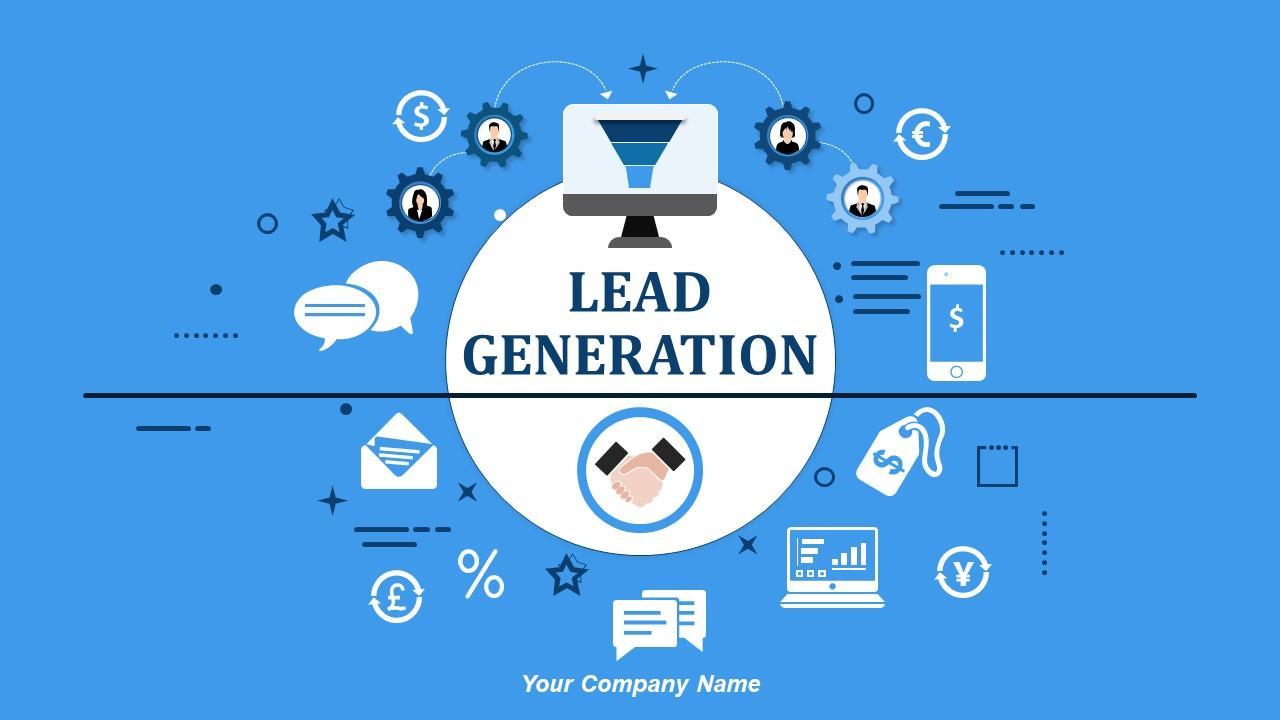
Enhancing Lead Generation by Tapping into Public Trends
In today’s fast-paced digital landscape, B2B marketers must stay ahead of the curve by leveraging public data to tap into emerging trends. By closely monitoring what’s trending, companies can refine their lead generation strategies, attracting potential clients who are actively seeking solutions that match their needs. This approach not only enhances visibility but also builds credibility in the eyes of prospects.
To effectively harness these public trends, consider the following strategies:
- Utilize Social Listening Tools: Platforms like Brandwatch or Hootsuite allow marketers to track conversations around specific keywords related to their industry. By identifying what your target audience is discussing, you can tailor your content to address their pain points and interests directly.
- Engage with Industry Reports: Regularly review reports and studies that analyze market trends. This data can shed light on upcoming needs within your target market, guiding your content creation and outreach efforts.
- Leverage Google Trends: Use this free tool to discover what potential customers are searching for in real-time. By aligning your content with these searches, you can position your brand as a go-to resource for information that resonates with your audience.
The integration of public data into marketing strategies also allows for more refined audience segmentation. By identifying behavioral patterns and preferences, marketers can create targeted campaigns that speak directly to distinct niches within their market. This personalized approach not only increases the effectiveness of lead generation efforts but also enhances customer relationships.
Consider creating a table to illustrate the correlation between trending topics and lead generation outcomes:
| Trending Topic | Target Audience | Lead Generation Strategy |
|---|---|---|
| Remote Work Solutions | HR Professionals | Webinars on Best Practices |
| Sustainability Initiatives | Corporate Executives | Case Studies on Green Practices |
| AI in Business | Tech Startups | Informative Blog Series |
Furthermore, embracing visual content and infographics can amplify your reach. As trends emerge, creating easy-to-digest visual representations of relevant data can capture attention on social media platforms and blogs. This not only makes your content more shareable but also establishes your company as an industry thought leader.
by systematically tapping into public trends, B2B marketers can create powerful lead generation strategies that resonate with their audience. The key is to remain agile, continuously adapting to shifts in consumer behavior and preferences, thus ensuring your marketing efforts yield fruitful results.

Building Trust through Transparency in Data Usage
In an era where data drives decision-making, B2B marketers must prioritize transparency in how they use public data. Transparency builds trust with clients and prospects, enabling marketers to cultivate deeper relationships based on mutual respect and understanding. When businesses openly communicate their data practices, they not only enhance their credibility but also empower stakeholders to make informed decisions.
To achieve this, consider the following strategies:
- Clear Communication: Clearly articulate how public data is sourced, analyzed, and utilized. This includes detailing the methodologies behind data collection and the purpose of its use.
- Privacy Assurance: Ensure that the concerns surrounding data privacy are addressed. Providing assurance that data is handled securely and ethically can alleviate potential apprehensions from clients.
- Regular Updates: Keep stakeholders informed about any changes in data practices. Regularly updating clients about how their data is being used fosters an ongoing dialogue that enhances trust.
- Feedback Mechanisms: Implement channels for clients to voice their concerns or questions regarding data usage. Actively responding to feedback demonstrates a commitment to transparency.
Furthermore, incorporating transparency into your data strategy can lead to innovative marketing approaches. By sharing insights derived from public data, marketers can position themselves as thought leaders, providing value beyond mere promotional content. This not only engages potential clients but also establishes a reputation for integrity and reliability.
Consider creating a visual representation of your data practices. A simple table can effectively summarize how data is processed, ensuring that stakeholders have a clear understanding at a glance:
| Data Source | Usage | Transparency Measures |
|---|---|---|
| Public Records | Market Analysis | Regularly updated reports |
| Social Media Insights | Customer Engagement | Data processing transparency |
| Industry Reports | Strategic Planning | Open feedback forums |
Ultimately, fostering a culture of transparency in data usage not only reinforces trust but also unlocks the full potential of public data as a resource. By prioritizing ethical practices and open communication, B2B marketers can transform public data into a goldmine of insights, driving meaningful connections and successful outcomes. In today’s business landscape, where trust is paramount, transparency is not just a strategy—it is a necessity for long-term success.
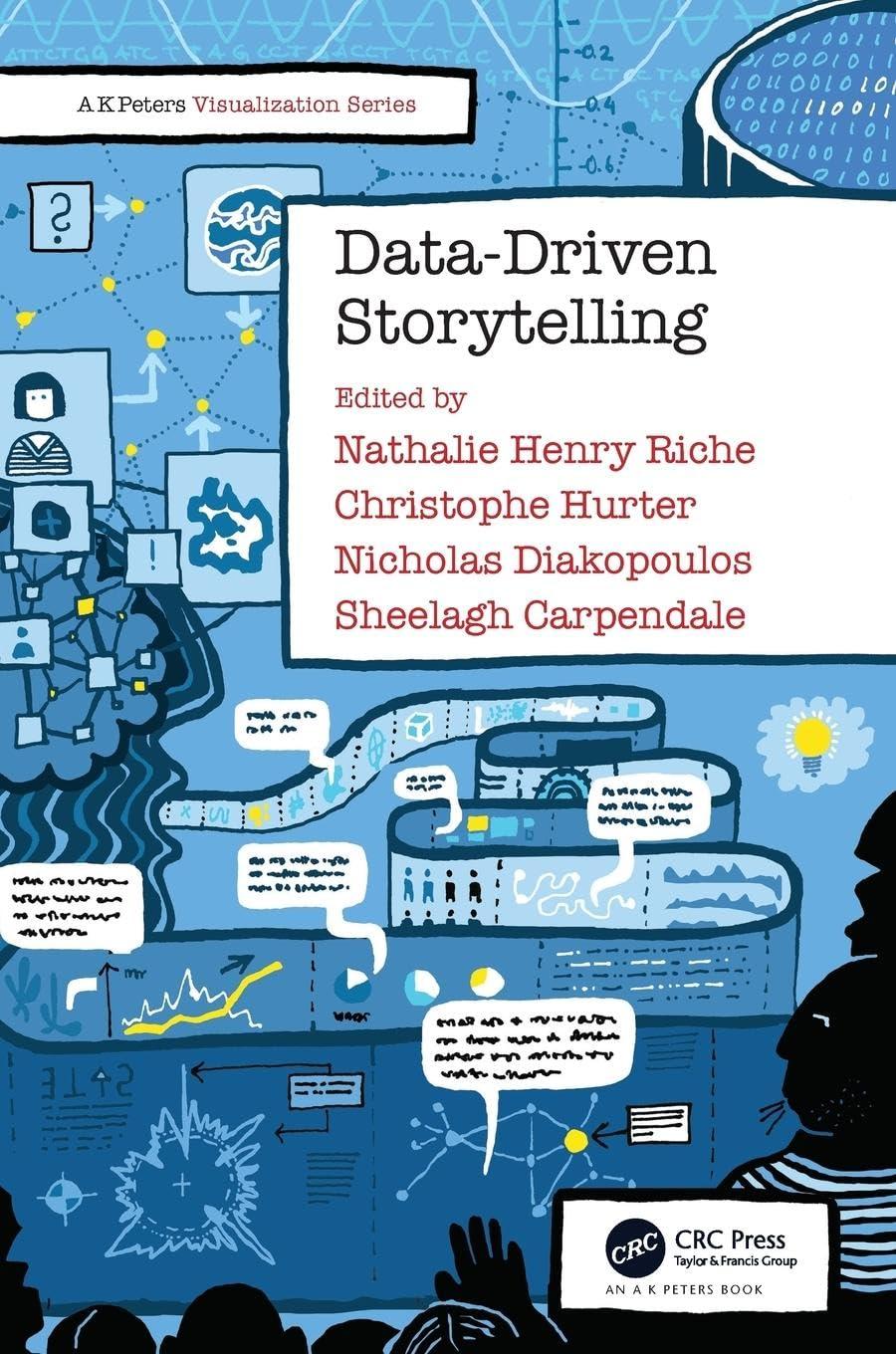
Crafting Compelling Narratives with Data-Driven Storytelling
In the realm of B2B marketing, data is more than just numbers; it’s a treasure trove of insights waiting to be transformed into compelling narratives. By leveraging public data, marketers can create stories that resonate deeply with their target audiences, illuminating the path from raw statistics to engaging content. Here’s how you can craft these narratives effectively:
- Identify Relevant Data Sources: Begin by exploring public databases, industry reports, and government publications. Sources like the Census Bureau, industry associations, and market research firms can provide valuable insights tailored to your audience’s needs.
- Choose a Compelling Angle: Data can tell many stories. Decide on a narrative that aligns with your brand message. Whether it’s illustrating market trends, showcasing customer behaviors, or highlighting industry challenges, your angle should connect with your audience’s pain points.
- Visualize Your Data: Infographics and charts make data more digestible and engaging. Use visuals to highlight key statistics and trends, ensuring they complement your narrative instead of overwhelming it. Tools like Tableau or Canva can make this process seamless.
- Incorporate Real-World Examples: Enhance your narrative by integrating case studies or testimonials that reflect the data you present. This not only builds credibility but also allows your audience to relate more personally to your findings.
To illustrate the power of data-driven storytelling, consider the following table that outlines key statistics on content marketing effectiveness:
| Statistic | Value | Source |
|---|---|---|
| Content marketing generates 3 times more leads | 3x | HubSpot |
| Companies that blog get 97% more links | 97% | HubSpot |
| 74% of companies say converting leads is their top priority | 74% | Content Marketing Institute |
By weaving these statistics into a narrative that emphasizes the benefits of content marketing, you can capture the attention of potential clients. Highlight how adopting a strategic approach to content can yield substantial returns on investment, both in terms of leads and engagement.
Lastly, ensure that you continuously iterate on your stories. By analyzing the performance of your data-driven narratives through metrics such as engagement rates and conversion statistics, you can refine your approach and deliver even more impactful content. Remember, the essence of storytelling lies not just in the data itself, but in the connections you forge through it.
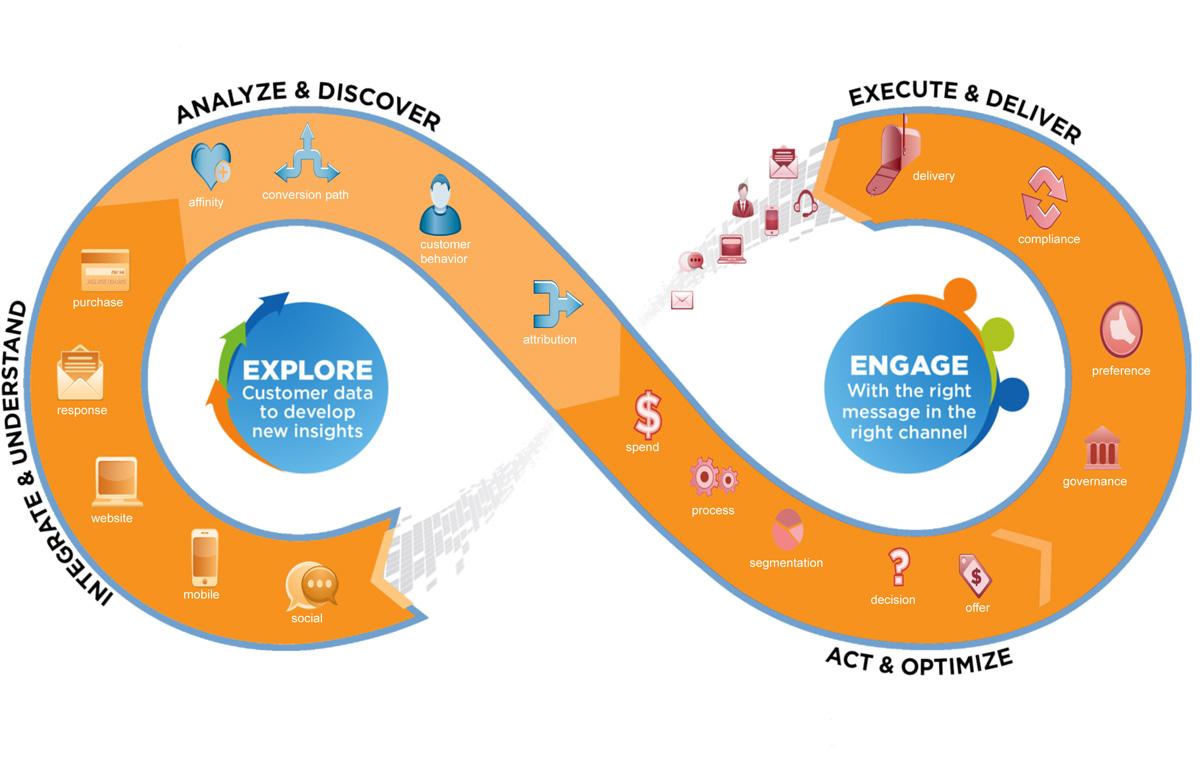
Measuring Success: Key Metrics to Track Your Data-Driven Efforts
In the realm of B2B marketing, data is your compass, guiding you toward successful strategies and improved ROI. However, to truly harness its power, you must keep a close watch on the right metrics. These indicators are not just numbers; they tell the story of your initiatives and highlight where adjustments are necessary to optimize performance.
Engagement Metrics are essential for understanding how your audience interacts with your content. Metrics such as:
- Click-Through Rates (CTR): Measure how effectively your emails, ads, or blog posts drive traffic.
- Social Shares: Indicate your content’s resonance and reach across platforms.
- Time on Page: A longer duration suggests that your content is valuable to readers.
By continuously monitoring these metrics, you can refine your content strategy to better meet the needs of your audience.
Conversion Metrics shed light on how well your efforts translate into tangible business outcomes. Key conversions to monitor include:
- Lead Generation: The number of leads captured through forms, downloads, or sign-ups.
- Sales Qualified Leads (SQL): Those leads that have moved further down the funnel, indicating stronger intent.
- Customer Acquisition Cost (CAC): The cost associated with acquiring a new customer, crucial for evaluating campaign effectiveness.
Tracking these metrics will empower your team to allocate resources effectively and maximize the returns on your marketing spend.
Lastly, Customer Insight Metrics provide a deeper understanding of your existing clients. Focusing on:
- Net Promoter Score (NPS): Gauges customer loyalty and satisfaction.
- Customer Lifetime Value (CLV): Predicts total revenue from a customer over their engagement with your brand.
- Churn Rate: Measures the percentage of customers who stop using your service, highlighting potential issues in retention.
These insights will not only help improve your product offerings but also forge deeper relationships with your customers, ultimately leading to higher retention rates.
identifying and tracking the right metrics transforms data into actionable insights. By focusing on engagement, conversion, and customer insights, B2B marketers can strategically navigate their campaigns, ensuring they are not just surviving but thriving in a competitive landscape. Continuous assessment and adaptation based on these metrics will help you unearth the gold hidden within public data, turning insights into opportunities for growth and success.

Navigating Ethical Considerations in Public Data Usage
In the vast realm of public data, the potential for B2B marketers is immense, yet navigating the ethical landscape is crucial. With the accessibility of information, professionals must prioritize integrity and transparency in their practices. To harness the riches of public data effectively, it is essential to establish a framework that respects individual privacy and upholds the trust of stakeholders.
When utilizing public data, consider the following ethical guidelines:
- Respect Privacy: Always ensure that the data you access does not infringe on the privacy of individuals or businesses.
- Transparency: Clearly communicate how data is sourced, utilized, and shared, fostering trust with your audience.
- Data Accuracy: Strive to use accurate and current data to avoid misleading conclusions that could damage your reputation.
- Compliance: Stay informed about local and international regulations, such as GDPR or CCPA, that govern data usage.
To further illustrate these principles, consider the following table that outlines the ethical versus unethical practices in public data utilization:
| Practice | Ethical Approach | Unethical Approach |
|---|---|---|
| Data Collection | Use aggregated data with proper permissions. | Harvest personal data without consent. |
| Data Analysis | Analyze data for insights that respect user anonymity. | Target individuals with invasive marketing. |
| Data Sharing | Share insights while anonymizing or aggregating data. | Disclose personal data to third parties without consent. |
By adhering to ethical standards, B2B marketers not only protect their organizations but also contribute to a healthier data ecosystem. This commitment to ethical practices ultimately enhances brand reputation and customer loyalty, creating a virtuous cycle of trust and engagement.
As B2B marketers delve into public data, embracing a mindset of responsibility can turn data-driven strategies into powerful narratives. When you prioritize ethics in your data usage, you’re not just uncovering potential leads; you’re building a foundation of respect and authenticity that will resonate profoundly with your audience.
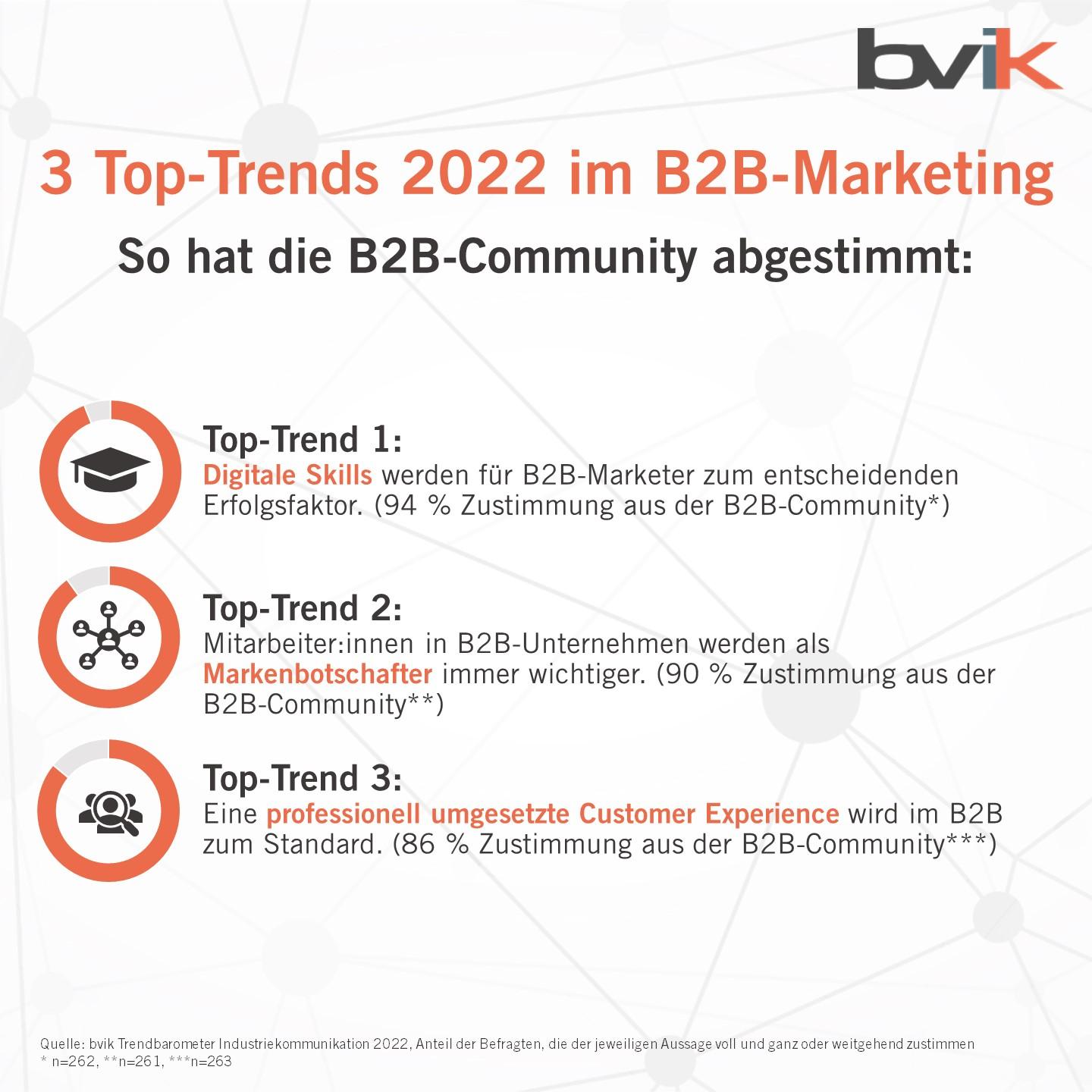
Future-Proofing Your B2B Strategy with Continuous Data Exploration
In the fast-paced world of B2B marketing, the ability to adapt and respond to changes is vital for long-term success. Continuous data exploration is not just a trend; it’s a necessity. By tapping into public data, marketers can unearth valuable insights that can shape their strategies and drive growth.
To stay ahead, consider the following strategies:
- Leverage Open Data Sources: Public data from government databases, industry reports, and academic research can provide a wealth of information. This data can reveal market trends, customer behavior, and competitive landscapes.
- Embrace Data Visualization: Transform complex data into easily digestible formats. Tools like graphs and charts can help your team identify patterns and make informed decisions quickly.
- Integrate AI and Machine Learning: AI can sift through vast amounts of data, uncovering hidden insights that would be impossible to find manually. This technology can predict trends and optimize marketing strategies with unparalleled accuracy.
- Encourage a Culture of Curiosity: Foster an environment where team members are motivated to explore data. Conduct regular workshops and training sessions to empower your team to utilize data effectively in their decision-making processes.
Consider implementing a structured approach to your data exploration. A simplified framework can ensure that your team remains aligned and focused on key objectives:
| Phase | Description | Outcome |
|---|---|---|
| Identify | Pinpoint the data you need. | Clear understanding of data sources. |
| Collect | Gather data from various public platforms. | Comprehensive data repository. |
| Analyze | Examine data for insights. | Informed strategic decisions. |
| Act | Implement findings into your strategy. | Enhanced marketing effectiveness. |
By nurturing a data-driven culture and continuously exploring public data, B2B marketers can not only enhance their strategies but also create a robust framework for future growth. This proactive approach allows companies to pivot quickly in response to market changes while uncovering opportunities that competitors may overlook.
the key to future-proofing your B2B strategy lies in the consistent exploration of data. By treating data as a dynamic asset rather than a static resource, businesses can uncover the gold hidden within publicly available information, ensuring they remain competitive in an ever-evolving landscape.
Frequently Asked Questions (FAQ)
Q&A: How B2B Marketers Can Unearth Gold from Public Data
Q1: Why should B2B marketers focus on public data?
A: Public data is a treasure trove of insights waiting to be discovered. By tapping into this wealth of information, B2B marketers can enhance their understanding of market trends, identify potential leads, and tailor their strategies to meet the needs of their target audience. Unlike proprietary data, public data is accessible and often inexpensive, making it an invaluable resource for businesses looking to gain a competitive edge.
Q2: What types of public data can B2B marketers leverage?
A: The possibilities are vast! B2B marketers can access a variety of public data sources, including government databases, industry reports, social media insights, academic research, and even competitor websites. These sources provide information on market demographics, regulatory changes, industry benchmarks, and consumer behavior, allowing marketers to make informed decisions and craft compelling campaigns.
Q3: How can public data drive better decision-making in B2B marketing?
A: Data-driven decision-making is the cornerstone of effective marketing. By analyzing public data, B2B marketers can uncover patterns and trends that inform their strategies. For instance, understanding the demographics of potential clients can help tailor messaging and product offerings. Additionally, public data can highlight gaps in the market and reveal areas for growth, enabling marketers to prioritize their efforts effectively.
Q4: Can you share an example of a B2B company successfully using public data?
A: Absolutely! Take the case of a software company that analyzed public data from industry reports and government statistics to identify a growing trend in remote work solutions. By aligning their product development and marketing efforts with this trend, they successfully positioned themselves as a leader in the space, capturing a significant share of the market. This example illustrates that when B2B marketers leverage public data strategically, they can seize emerging opportunities and drive business growth.
Q5: What tools or techniques can B2B marketers use to analyze public data?
A: There are numerous tools available that can help marketers analyze public data effectively. From data visualization platforms like Tableau to web scraping tools that gather information from various online sources, the options are abundant. Additionally, leveraging advanced analytics software can help in discerning insights from complex datasets, enabling marketers to make data-driven decisions with confidence.
Q6: How can B2B marketers ensure they’re using public data ethically?
A: Ethical use of public data is paramount. B2B marketers should always respect privacy guidelines and data usage policies. This means thoroughly understanding the terms of service of any data source they utilize and ensuring compliance with regulations such as GDPR. By prioritizing ethical practices, marketers can build trust with their audience and foster long-term relationships.
Q7: What’s the first step for B2B marketers looking to start using public data?
A: The first step is to identify your specific goals. What insights are you hoping to uncover? Once you have clarity on your objectives, explore the types of public data that align with those goals. Start small by analyzing a few key sources, and as you gain confidence and skill, expand your efforts. Remember, the journey of unearthing valuable insights from public data is a continuous learning process that can lead to remarkable results.
Q8: Any final advice for B2B marketers on this journey?
A: Embrace curiosity and be fearless in your exploration! Public data holds immense potential, and with the right mindset, you can transform raw information into actionable strategies. Think of it as your pathway to innovation and success. The gold within public data is waiting to be unearthed—so take the plunge and discover what it can do for your marketing endeavors!
To Wrap It Up
the vast ocean of public data is not just a repository of information; it’s a treasure trove waiting to be discovered by forward-thinking B2B marketers. By harnessing the insights hidden within this data, you can unlock unparalleled opportunities for growth, innovation, and competitive advantage. Embrace the power of analytics, leverage cutting-edge tools, and cultivate a mindset of curiosity and exploration.
Now is the time to take action—dive deep into the wealth of information at your fingertips and transform raw data into actionable strategies that will propel your business to new heights. Remember, the greatest successes often arise from the most unexpected sources. Don’t just look at public data as numbers and statistics; see it as a vibrant narrative filled with potential.
So, embark on this journey of discovery, and let the gold beneath the surface guide you toward a future brimming with possibilities. The insights you gather today can shape the innovations of tomorrow. Be bold, be visionary, and start unearthing the gold that is waiting for you in the world of public data!





